More than sixty years later, the Dyatlov Pass incident remains one of the most baffling and eerie mysteries of all time. On January 23, 1959, nine young Russian students of the USSR set out for a 190-mile cross-country ski tour in the Urals north of Sverdlovsk. When they failed to return, a search party was deployed, and after six days, a tragic discovery was made. The mysterious circumstances of their death still puzzle experts to this day. Several months into the investigation, the Soviet government closed the case and place the documents into “Secret” archives where they remained until recently. In February 2019, they reopened the Dyatlov Pass case to conduct a final investigation.
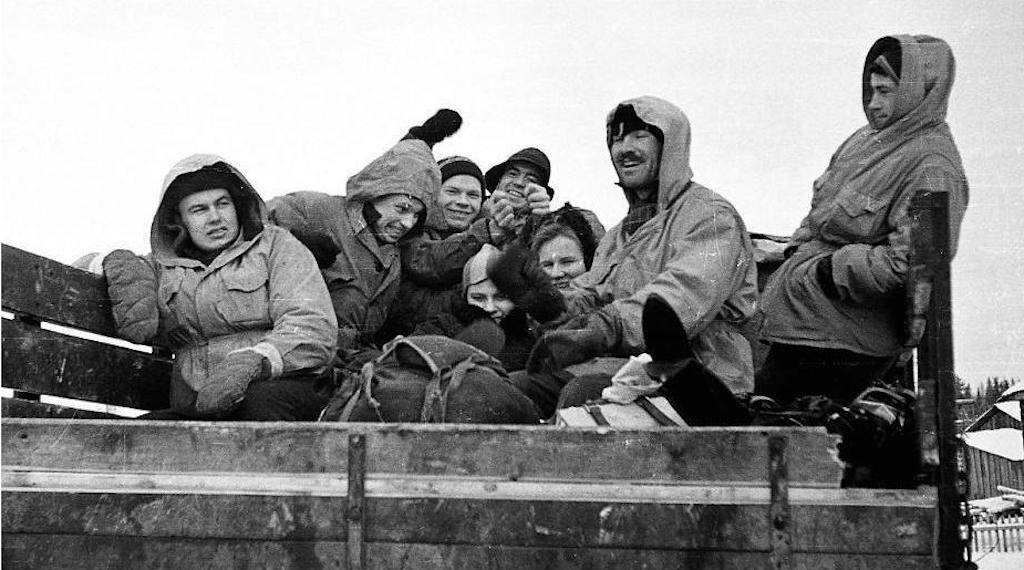
Victims of the Dyatlov Pass Incident
Igor Dyatlov, a fifth-year Radio Engineering student, led the team of nine skiers who perished in the northern Ural mountains. Later, the pass was named after him. In addition to Igor, there were two young women, six young men, and a 38-year-old war veteran, Alexander Zolotarev. The victims are identified as:
- Igor Dyatlov
- Zinaida Kolmogorova
- Lyudmila Dubinina
- Alexander Kolevatov
- Rustem Slobodin
- Georgiy “Yuri” Krivonischenko
- Yuri Doroshenko
- Nikolai Vladimirovich Thibeaux-Brignolles
- Semyon “Alexander” Zolotaryov
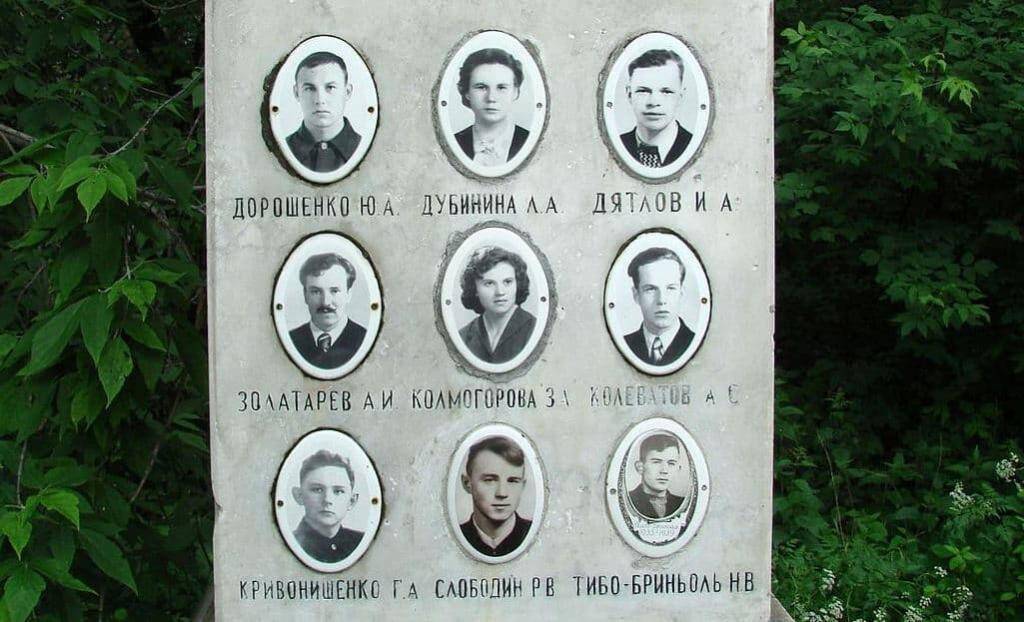
The students were attending the Ural Polytechnic Institute, a technical university in a town called Yekaterinburg in the Southern Urals. As members of the University Sports Club, they trained for trekking tours that would take them into the wilds of the Ural Mountains. Still, most of them were novices. Additionally, the particular route they chose belonged to the third category, the most difficult of treks. During the winter, the area of their tour was known for its deep snow, fierce and sudden storms, and high winds.
The Route Plan
The students intended to climb Mount Otorten (meaning “don’t go there” in the indigenous Mansi language) and Mount Oika-Chakur. Both mountains are over 4,000 feet in elevation. As the crow flies, forty-three miles separate the two mountains. The trip would start on January 23, and the group was scheduled to return to their base by February 12. Igor, however, thought a more realistic return date would be February 14 or 15. However, he did not report this plan until after they began the expedition. Igor didn’t submit the route plan to the Sports Club officials, but during the investigation, Alexander Kolevatov’s sister produced the route. The following image details the original plan.
Into the Wild
[blockquote align=”none” author=”Z. Kolmogorova, Jan. 23, 1959″]And here we are on the train. We sang all the songs that we know, learned new ones, everyone goes to sleep at 3 (am). I wonder what awaits us on this trip? What will we encounter? [/blockquote]
The group spent the first few days of the trip traveling by train, bus, and truck to get to their starting base. Then on the 27th, they headed out on skis. Shortly after the trek commenced, the 10th member of the Dyatlov group, Yuri Yudin, developed a major problem with his leg and was unable to proceed to the active portion of the tour. He returned home and lived until 2013.
The rest of the Dyatlov group trekked along the Lozva and Auspiya rivers where they camped overnight on the 28th, 29th, and 30th. At this time, they were following the Mansi reindeer trail. On January 31, they began their ascent of Kholatchakhl Mountain which is about nine miles from Mt. Otorten. Ironically, Kholatchakhl (also Holatchahl or Kholat Syakhl) means “dead mountain” in the indigenous Mansi language. This is because not much grows on its barren tundra landscape and is known to have severe wind and blizzards. Once they left the treeline, the deer trail ended.
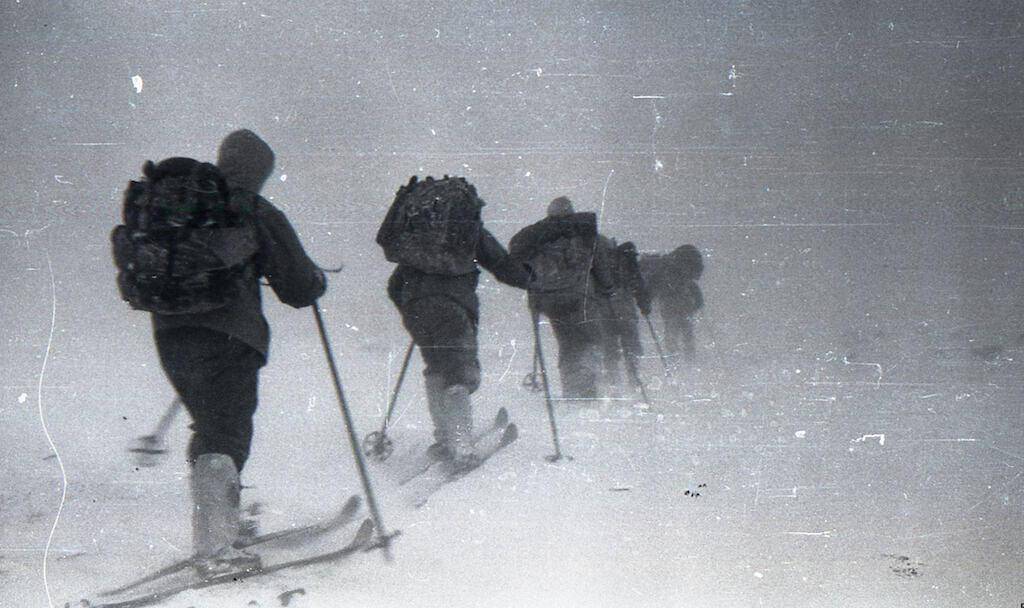
A Mansi ski trail showed the way for a while, however, poor weather conditions made it difficult to see the path. They deviated further and higher than they should have gone. Instead of heading back down to the valley where they would have had more safety amongst the trees, they decided to set up camp on the ridge. The elevation: 3,540 feet.
The Group Never Returns
After failing to return from the expedition on their scheduled date of February 12, the families of the missing skiers became worried. The University Sports Club told them that Igor had sent a message with Yuri Yudin that they would return on February 14 or 15, and when the 15th came and went, they notified the authorities. The club officials, police, and the military canvassed the area with aircraft and the help of dogs, students, and teachers.
Then expert trackers joined the search. The rescue team included the indigenous Mansi people who identified the skiers’ previous campsite located next to the Auspii River. On February 25 (or the 26th), another group of searchers followed barely discernable ski tracks from the river. Boris Slobtsov, Mikhail Sharavin, and Ivan Pashin skied along the pass where they discovered an abandoned campsite. Only small portions of the tent poked out from the snow, but it contained almost all of the students’ personal items.
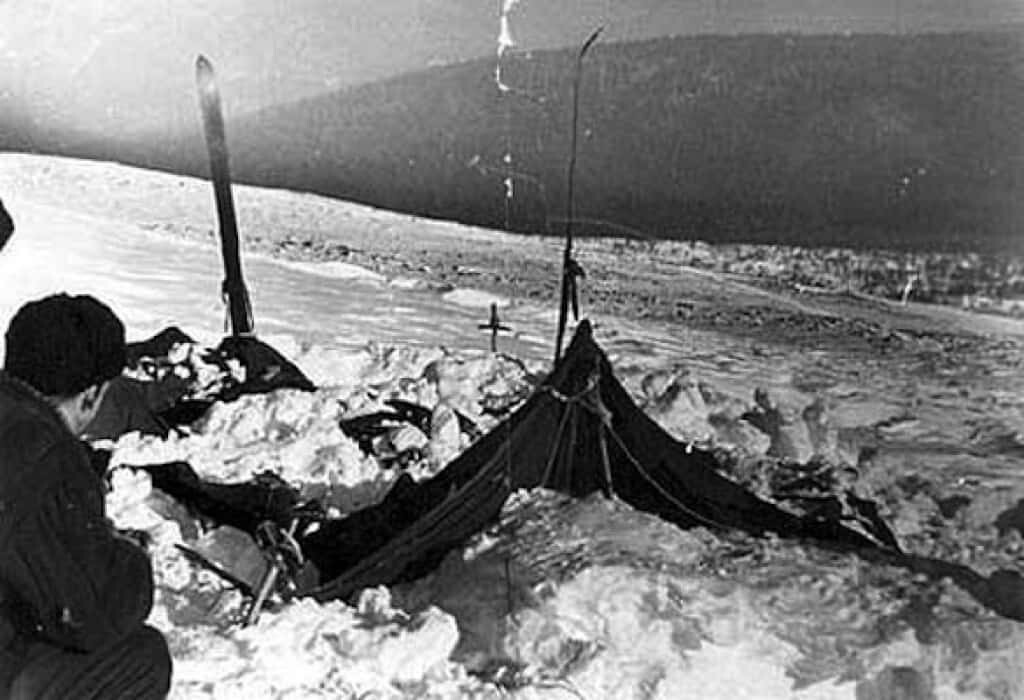
Investigation of the Events
Oddly, there were three primary cuts measuring 12.6 inches, 16.5 inches, and 35 inches in the canvas of the right side of the roof. The analysis determined that the cuts had come from the inside. Investigators wondered if the skiers had crawled out through the holes and why.
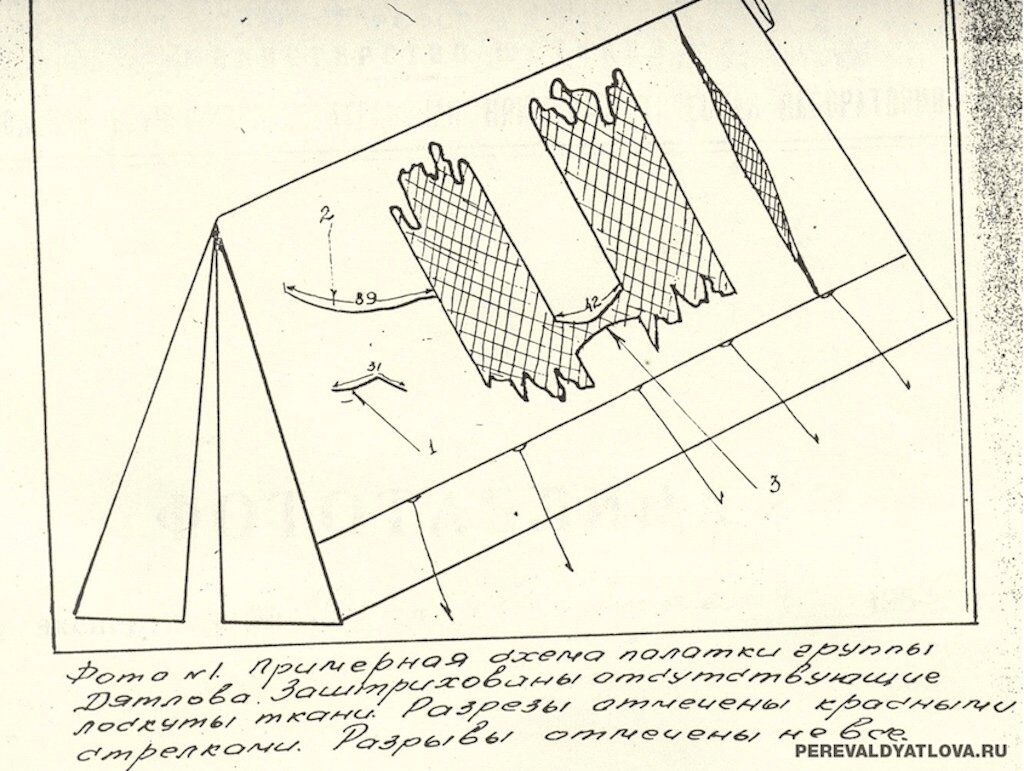
Inside the tent, they found nine pairs of boots, plus three felt boots, padded and fur jackets, parkas, axes, blankets, hats, socks, food, cooking items, and other belongings. Eight pairs of skis lay near the tent. They also found rolls of film and diaries that helped investigators recreate the group’s movements up until the last day they were alive – probably February 1 or 2.
Around the snow-covered campsite, footprints leading away from the tent were visible. Some of the prints revealed that certain individuals were only wearing socks, while others were completely barefoot. The prints led to 500 meters away from the tent and then disappeared in the snow.
Discovery of the Bodies
The first two bodies, Yuri Krivonischenko and Yuri Doroshenko turned up next to a cedar tree bordering the forest. The location was almost a mile east of the tent. Both were barefoot and in their thermal underwear, laying next to each other. Evidence indicates that they had made a small campfire, and branches were broken up to 15 feet in the tree where the students may have climbed up to gain better visibility of something, perhaps the campsite.
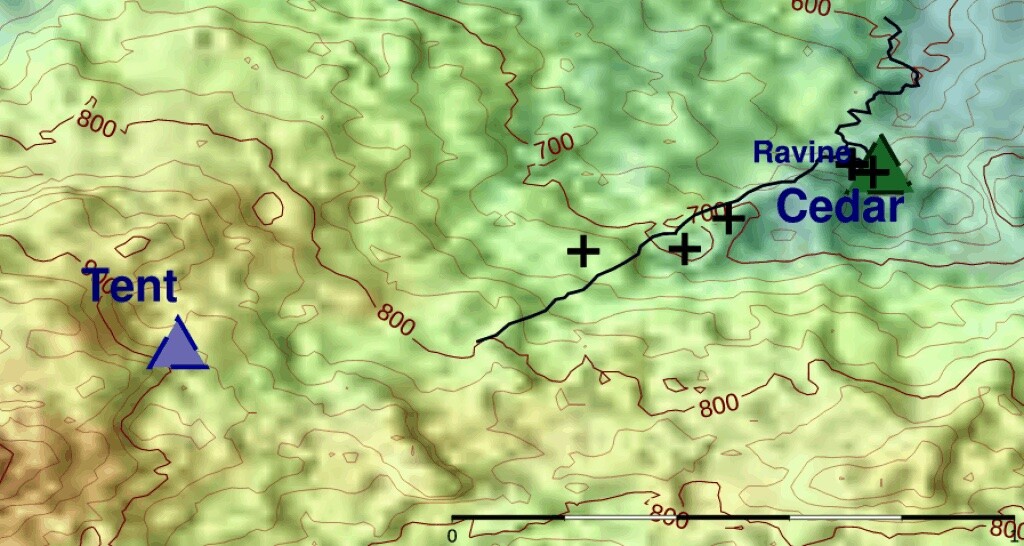
On the same day, Mansi hunters found the leader of the group, Igor, about 980 feet away from the cedar tree in the direction of the tent. He lay on his back clutching a birch tree branch that he appeared to have been waving. He was dressed fairly warmly, except for the lack of shoes. However, it was odd that he had on a wool sock on his right foot and a cotton sock on his left.
You May Also Like: Disappearance of the Sarah Joe
Search dogs found Zinaida Kolmogorova about 1,080 feet up the hill from Igor. She too wore no shoes, although she had on warm clothing. Her nose had bled, and she was heading toward the tent.
Other searchers found Rustem Slobodin on March 5. He was even further up the slope from the cedar and also appeared to have been walking toward the tent. Like Kolmogorova, blood stained the skin around his nose. Four pairs of socks covered his feet, but there was only one boot on the right. Otherwise, he was dressed warmly. Although Slobodin had a fractured skull, it was not enough to kill him. Officially, he died of hypothermia.
The Search in the Spring
For months the search continued, but no other bodies turned up. Then in early May, the snow had melted substantially. Mansi searchers who found clothing scattered around the forest offered to dig around in the valley, 50-75 meters from the cedar tree. In the nearby ravine, they discovered the bodies of the other skiers under about seven feet of snow.
Someone or something had crushed the base of Tibo-Brignol’s skull. However, he had no external wound indicating a blow to the head. He suffered massive bleeding inside his head.
Lyudmila Dubinina had multiple broken ribs on both sides. Her heart showed extensive hemorrhage in the right ventricle and bleeding in her chest cavity. The autopsy also noted that Dubinina was missing her tongue and eyes – probably as a result of decomposition in the stream.
Kolevatov had frozen to death. Zolotaryov had also suffered severe chest trauma with multiple rib fractures and bleeding in his chest and heart. His eyes were also gone.
Also, it appeared that those who died later had taken clothing from those who had died earlier. Zolotaryov wore Dubinina’s fur coat, and Dubinina wore Krivonishenko’s pants and his jacket around her foot and shin.
Official Causes of Death
- Igor Dyatlov –froze to death.
- Zinaida Kolmogorova – froze to death.
- Lyudmila Dubinina –Extensive hemorrhage in the right ventricle of the heart, multiple bilateral rib fractures, abundant internal bleeding into the chest cavity (caused by exposure to a large force).
- Alexander Kolevatov – Major chest fractures, froze to death.
- Rustem Slobodin – froze to death, also, closed craniocerebral injury (frontal bone fracture on the left side).
- Yuri Krivonischenko – froze to death.
- Yuri Doroshenko – froze to death.
- Nikolai Vladimirovich Tibo-Brignol – Closed comminuted depressed fracture in the region of the fornix and base of the skull with abundant hemorrhage under the meninges and in the brain substance (caused by the influence of great force).
- Semyon Zolotaryov – Multiple rib fractures to the right with internal bleeding into the pleural cavity (caused by exposure to large forces).
Unexplainable Details
Surprisingly, there were no major external wounds. However, the force to their bodies was equal to that of a high-speed car crash or an explosion, as described by Boris Alekseevich Revived, the forensic medical examiner in charge of all the autopsies in the case. He concluded that the injuries to Dubinina and Zolotaryov “. . . are the result of a large force, approximately the same as that applied to Tibo [Brignol]. These injuries, namely, with such a picture and without disturbing the integrity of the soft tissues of the chest, are very similar to the trauma caused by the air blast wave” (Google Archives).
Additionally, a few parts of the victim’s clothing contained high radiation levels. However, the tissues of their bodies did not, and there is no evidence that the victims died from radiation. When Levashov, the Chief Radiologist, testified about the radioactive contamination he said, “Yes, clothing is contaminated with either radioactive dust that has fallen out of the atmosphere, or this clothing has been exposed to contamination when working with radioactive substances, or on contact. This pollution is, as I have already indicated, the norm for people working with radioactive substances” (Google archives). Additionally, families of the first five bodies noted a deep orange or tan color on the victims’ flesh.
Investigators agreed that the entire team left the tent suddenly. The reason for this and why they did not put on their shoes or take their skis is unknown. However, the tracks indicated that they were walking at a fairly normal pace and not running. Although foul play was a consideration, there was no evidence supporting this.
Theories About the Dyatlov Pass Incident
Multiple theories surfaced about the student deaths in the Urals that night. Investigators initially considered an attack by the indigenous Mansi people. But there were no fatal external wounds on the bodies, and prints in the snow indicated that there was no struggle. The Mansi who live in the region had good relations with the other locals, and they often lent help to those in need. Thus, experts ruled out this theory.
Another proposal involved avalanches. However, investigators were doubtful because much of the tent lay above the snow, and there were still discernable footprints on the ground.
The perplexing question remains, why did the campers cut open the tent open from the inside? To date, there has not been a satisfactory theory. Experts say one explanation for their lack of clothing may be that when someone suffers hypothermia, they may shed their clothes because the brain can create a false sense of burning heat in the body. However, the students left the tent without much of their warm clothes, shoes, and skis.
“Fireball” Observations
Other theorists say the area surrounding the event was a military testing ground and that a weapons test accidentally killed the individuals. This is supported by the medical examinations that cited a “powerful force” killed some of them. Additionally, during February and March, multiple witnesses claimed to have seen what they described as fireballs in the night sky. They provided written statements including detailed descriptions.
March 31, 1959 “…within 20 minutes, it moved on us, hiding behind the height of 880. Before hiding behind the horizon, a star appeared from the center of the ring, which gradually increased to the size of the moon, began to fall down, separated from the ring. An unusual phenomenon was observed by many people raised on alarm. Pros m to explain this phenomenon and its safety, as in our case it produces disturbing impression. Avenburg, Potapov, Sogrin” (Google translation).
Experts compared those descriptions with test launches of an Intercontinental Ballistic Missile R-7 and believe there may be a connection. However, the government denied any military testing occurred in that area. Unfortunately, subsequent claims of fireballs and orange spheres on February 1 or 2 could not be verified.
Naturally, without any clear answers about the incident, the fringe community cites UFOs and Yeti as additional theories. A movie and documentaries have also aired regarding the event, but the mystery has never been solved.
Case Closed and Reopened
Through the course of the investigation, the family and friends of the skiers never found any closure. Nobody could provide an explanation about the events on Kholat Syakhl mountain. Subsequently, the Soviet Union government closed the file and labeled the cause of the tragedy a “spontaneous force.”
In February of 2019, the Prosecutor General’s Office of Russia reopened the Dyatlov Pass case as a result of family and international media pressure. As they have completely ruled out any criminality in the case, investigators will only consider three possible causes: hurricane, avalanche, and snow slab. They planned to send experts in geodesy, metrology, and search-and-rescue back into the field in March 2019. Additionally, new examinations of the corpses will take place. Officials plan to release the results of the investigation in August.
Additional references:
Ria.ru
Hibinaud
Co-authored by Lochland McClelland.
Updated: May 18, 2019.